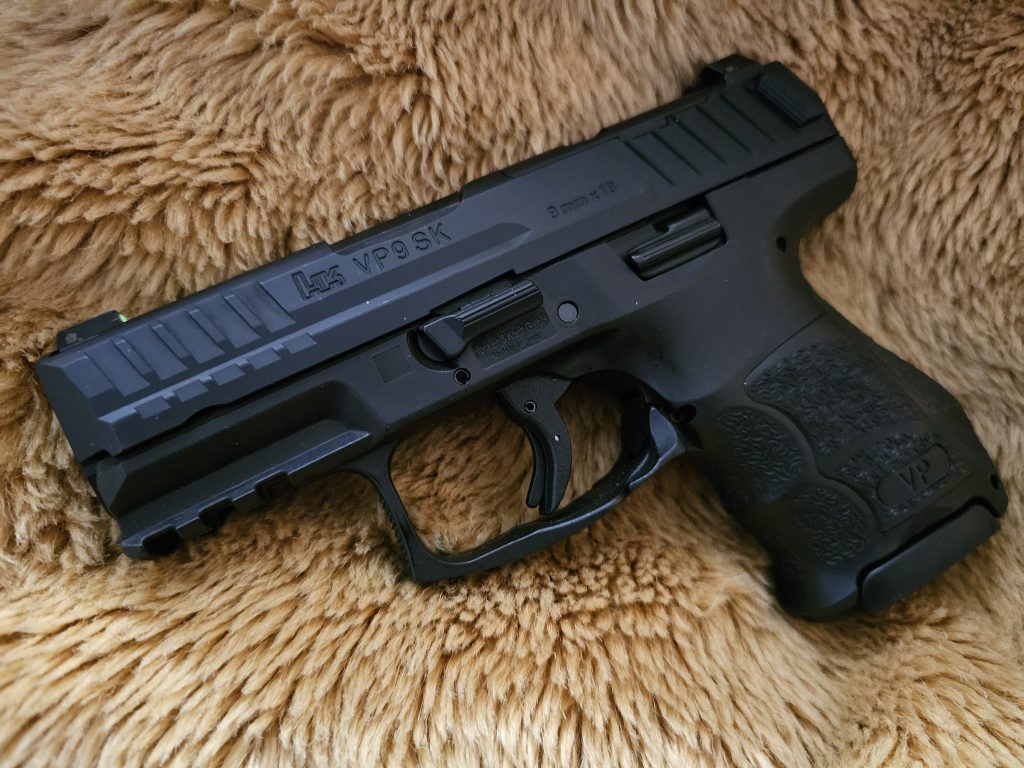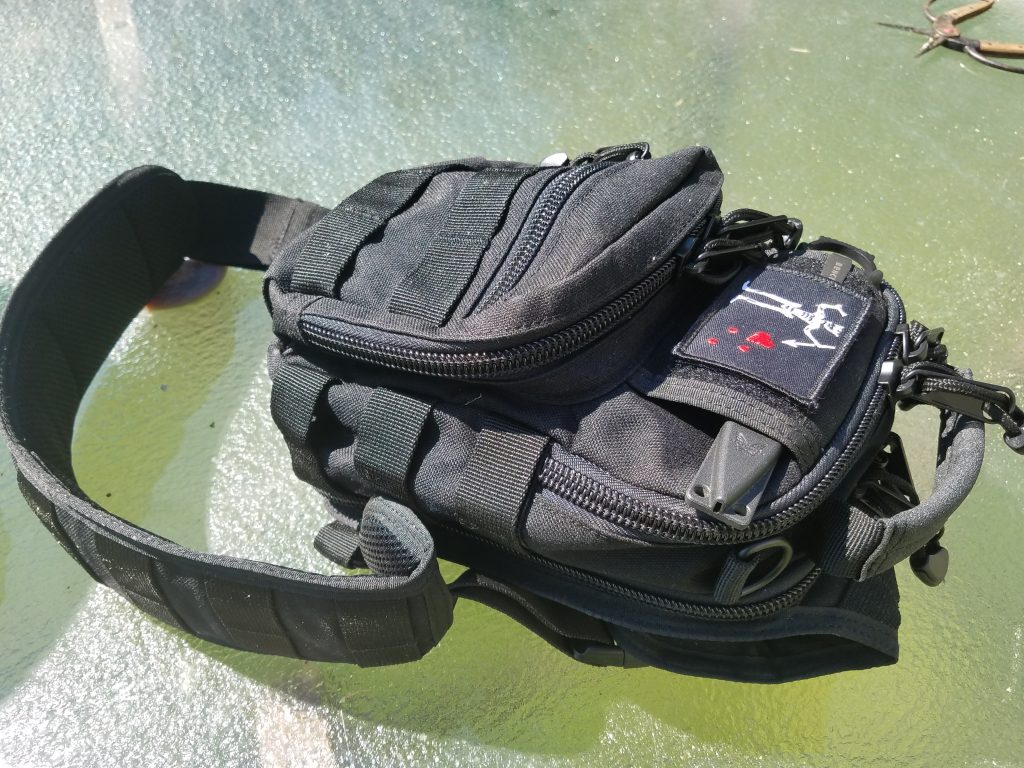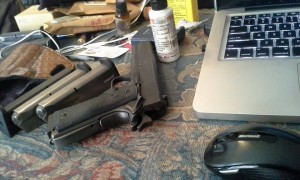I’m going to fisk a Pro-Gun article here. Not to play Devil’s Advocate, but to make some corrections. The article is found at BuzzPo.
1. TRIGGER: Probably the most important feature for your EDC. 99% of all accuracy issues seem to always come back to trigger control. Now that doesn’t mean that with your skills and abilities you can’t master a goofy trigger. But why put yourself through that?
When selecting your EDC, pick a weapon that has a trigger that feels good. Think of it as putting on a pair of boxer shorts one size too small. You’d likely eventually adjust, but it never really feels natural and quite right.
You are correct, Sir. Most all accuracy issues can be found in the trigger. However it is not in the Mechanics of the Trigger, but in the Manipulation. It’s how you use it. Even a bad trigger used by a good shooter can result in outstanding accuracy. Just like a great trigger used by a poor shooter will of course result in poor accuracy. To quote Chuck Yeager, “It’s not the plane, it’s the pilot.” You can not buy proficiency. That takes practice, regardless of what pistol you buy.
2. GRIP SIZE: Look at your hands! If your a small petite woman with tiny hands, I’m going to go out on a limb and say that you’re not going to like the full size 10mm Glock 20. And by the same token, I’m a big guy with bear claws for hands. So I personally hate shooting the Sig P938. Again, this is a preference thing. Does your hand naturally wrap around the grip? Does the grip length extend to the base of your hand, or are your finger(s) dangling off the end? Does the grip angle fit and feel well in the webbing between your thumb and trigger finger? Find what feels natural for you.
Here’s where a lot of compromises come in to play. The Litany of Questions that the author asked are rather useless to the purpose. EDC, “Every Day Carry”, for the most part really means “Concealed Carry”. And that means different things for different people. Everything having to do with Concealed Carry means Compromise. You are going to compromise Power, Practical Accuracy, Comfort, and Capacity all for the sake of having something that you the EDC Person can have on you all the time, every day. How you dress, what you are going to be doing that day, the weather, where you are going… all these factors come into play. And for all of this, the gun is the least important selection… more importantly is having the right Holster.
3: Frame Size & Safety: This one is simple. How are you planning to carry? If you want to concealed carry, a full size Glock with a 5 inch barrel will pose some significant challenges. Furthermore, frame size plays a part in felt recoil with larger calibers as well. So that tiny 9mm may actually thump a tad harder than a full size .45.
What about an external mechanical safety? I prefer not to have one. One less thing to fiddle with if you need your EDC in action. But that’s only my preference. If you prefer an external safety, PRACTICE WITH IT! And by practice, I mean find a range that lets you draw and fire from the holster. Get your draw stroke and safety disengagement down as you draw, and your trigger press smooth and consistent as you extend your arms. Fire 2 or 3 rounds at your threat (target), clear the area to the right and left, safety, re-holster, and repeat.
Wait, didn’t you already talk about size? So… you need to talk about it again. Huh, I guess size does matter. You pull out a 5 inch Glock? So a Glock 34, 35, or 41… essentially Glock’s competition pistols. So you are saying not to EDC a Competition Pistol. Okay. I guess that means I’ll leave my Razorcat at home as well. Wait, we’re talking Size again and all the sudden you just straight into a day long pistol course in the space of one paragraph. Dude, everything you explain, you do by asking questions. Don’t ask me questions, give me the answers. This is why we’re reading your article! And why I’m fisking it.
External Mechanical Safeties, good point about practicing with it. But the difficulties involved with it are grossly overstated. If you have the mental capacity to conclude that you have all the legal criteria met for the use of lethal force to remedy whatever situation you are in, you should also be smart enough to know how to flip a lever from SAFE to FIRE. This is not rocket science. And it’s not solving a Rubic’s Cube. It’s a Safety Lever. Yes, indeed… Practice with it. A lot. In my police academy, we were told 500 Presentations from your holster before you carry a new gun or use a new holster on duty. That sounds like a lot… and it is. But it’s more of a goal than a requirement. The point of it is practice and get used to it.
4: Caliber: My favorite subject. “My .40’s faster than your .45. My .45 hits harder than your 9mm.”
Good God, when this subject comes up, it’s worse than a male genitalia measuring contest! What good is a large caliber if your rounds are 5 feet off target? And I’m not talking about the first round. I’m talking about the follow up shots. In a real life or death scenario, you’re going to fire until you stop the threat. Your EDC should be a caliber that you can consistently control well. If you can do that, SIZE DOESN’T MATTER!
Well, yes and no. There are minimums and maximums. I wouldn’t go below .380 Auto for a defensive caliber. Too many people out there are using .22 Long Rifle, .32 Auto, .25 Auto… These are just not up to the task. Even if shot placement is perfect, it may not stop the threat. The threat is the whole reason you are shooting. The Bad Guy or Wild Animal or whatever alien, monster, zombie is ruining your day… you are shooting it because it’s about to do something really bad and you have to stop it from doing that thing. If I come at you with my wee little pocket knife, and you pull your .22 or .25 on me… I promise you, I will turn you into coleslaw and you will be dead before I get tired and expire. You will beat me to the Pearly Gates because your gun isn’t enough to stop me. At least, not with a reasonable enough expectancy. There are occasional antidotes of immediate threats being halted. But there are far more that are just otherwise. Such as people not even knowing they had been hit until later. Such a President Regan, who caught a small caliber bullet and didn’t realize it.
On the flip side, handguns designed for hunting make poor EDC choices. Not just for size and weight considerations but for power. A cartridge designed to drop an Alaskan Brown is probably not the best idea for self defense. Not from the stand point of ruined meat, but the legal liability of over-penetration and having to articulate this in front of a jury. This is a very real and legitimate concern these days. The heyday of “carry as much gun as you can” is long over. I suggest using similar calibers and similar loads as your local law enforcement uses. Because in court, you can articulate you chose that same loads for the same reasons. Your attorney will be able to defend you easier than if you chose something along the lines of something exotic. There are no Magic Bullets.
5: Magazine Capacity: Finally, the magical trade off. Magazine capacity vs. concealability. This is a question that only you can answer. Just remember, there’s no rulebook that says you can only have one attacker at a time. Be prepared, and be ready.
In conclusion, your EDC is by your side constantly, like your spouse. So make sure it feels natural, fits well, isn’t uncomfortable, doesn’t kick you too hard, and you practice with it frequently.
A question only I can answer? You haven’t answered any questions! I’ve never been in a situation where I wished I had less ammo. Ideally you want as much as you can get in your gun. But we’re talking EDC and that means Concealment for most of us, and that means compromising. Capacity is usually the first to go. But if your caliber is adequate, capacity is generally mitigated and less of a concern. Most small handguns are packing 6 or more rounds, snub nose revolvers generally get 5 shots. This is just fine for most of us. Most defensive shootings are only 1 or 2 rounds. Mostly. Realistically though, a five shot snub is going to be plenty. And if you need more, this is why you carry more ammunition, either in a Speed Loader, Speed Strip, or Spare Magazine. Not a bigger, heavier gun. But hey, if you can pack a full sized Beretta 92FS with a 17 round capacity, or an XDM with a whole box worth of Hollow Points – then more power to you. But you will still want to carry a spare mag.
Unlike your Spouse, you are not married to your EDC carry gun. You can have more than one. In fact, in most places, there are no limits on how many you can have or even carry on you if you want to go Yosemite Sam. I’d suggest having several guns and carry the best one for what your day has planned. Feel, your perception of recoil, comfort… that’s all BS. Clint Smith said that a carry gun shouldn’t be Comfortable, it should be Comforting. You are not picking out a Puppy or a fluffy pillow… you are picking a weapon for which you are going to use to defend your life, or the lives of your loved ones. The only considerations after you have concluded that it is one that you will be able to actually EDC with… RELIABILITY is First and Foremost. It has to go bang every single time. Second – Practical Accuracy. You have to be able to make hits with it. If you can’t hit your target with it, it does no good outside of brandishing and taking selfies in the bathroom. And that takes – and I agree with the author completely – Practice. Dedicated, frequent practice. Even after you have taken your courses and have confidence, you still have to practice. Shooting skills are like Milk. It goes bad quick if you are not cycling through it.






